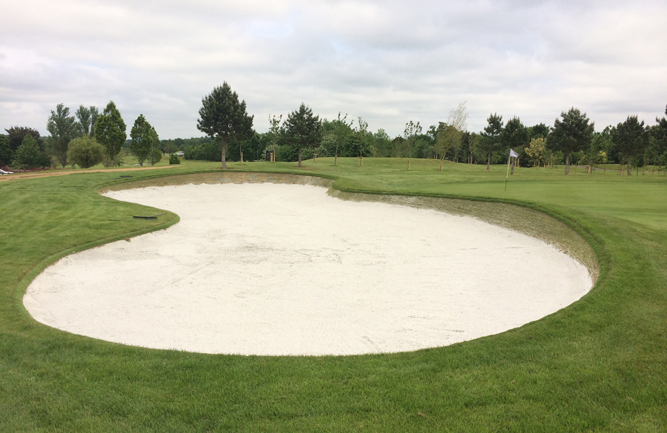Wisdom from Waco: A few of my not-so-favorite things on the course
Some things we continue to do just because we always have, even though they no longer make sense. Daylight Saving Time is high on my list.
When it comes to golf courses, there are many examples of customs that add little, if any, value to the quality of the course and virtually no value to playing quality. Yet, many courses continue to waste labor hours annually on — what I consider — customs that should just go away. This is particularly problematic for courses with very limited budgets. And, as we all know, labor is extremely difficult to find these days. Consider the following examples:
150-yard posts in the middle of a fairway
In the days before smartphones, GPS on carts or laser range finders, the 150 post made some sense. If nothing else, it provided a directional aid to players unfamiliar with the course. Its main function today is to force the fairway mower operator to repeatedly get off and on the unit. Typically, the operator mows up to the post, lifts the reels, gets off the unit to remove the post, gets back on the unit, lowers the reels and mows past the hole. Most courses repeat this 14 times. That equates to 48 mounts and dismounts, extra wear and tear on the mower and a great deal of lost time.
Tee signs with yardages and hole depictions
Why? It is easy enough to include all of this information on the scorecard.
Ball washers
The only ball washer on any golf course should be on the first tee. Who uses ball washers? It appears, to me, the main users of ball washers are ball hawks who want to clean the filthy, mud-encased balls they fished out of the pond. Unsurprisingly, this turns a freshly cleaned washer into something like a septic tank. Of course, washers are always installed in high-visibility areas and thus require constant cleaning and trimming.
Eliminate above-ground tee markers
I expect this suggestion will meet with the most skepticism, but it also saves the most labor, so keep an open mind. Also, this suggestion is probably most appropriate for low-budget courses that typically have smaller tees.
I’ll admit I developed this scheme after volunteer mowing tees at a local course with a small crew. The course has six tee decks spread over 100 yards or more. At each deck, I have to dismount the tee mower, move the markers, mow, move and replace the markers and remount. This means I’m off and on the mower twice for each deck. Multiply this by six decks, and 18 holes equals a very long day (216 times if you’re counting).
Here is how I believe this could work. Virtually all courses use colors to identify tees to those on the scorecard. Remove the existing tee markers. Paint a matching circle on the cart path adjacent to the deck for the blue tee, red tee, etc. Now the players can easily identify which deck is which. Once on the tee, install three painted and numbered in-ground tee markers. For most courses, three markers will provide enough options to keep the turf healthy.
Vary the location of the numbered markers to balance the distances. For example, the No. 1 marker might be on the front of the tee on the first hole, the middle on the second and the back on the third. Do this for all three tee markers on each deck. A sign at the first tee will inform players of the tee numbers (1, 2 or 3) used that day.
I recognize this might not work for tees that receive heavy iron traffic. Such tees might need more than three tee locations and above-ground markers. Also, crews will need to periodically trim the tee markers. Finally, I have never seen this done, so there may be very good reasons why I have not considered it.













When mowing tees…
Mow where the markets aren’t…
Get off and move the markers once to where you already mowed…
Finish mowing the tee…
No reason to get off twice.